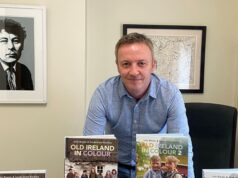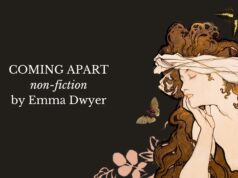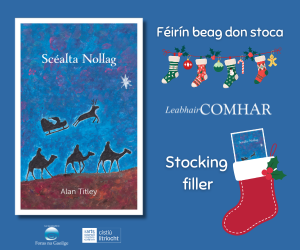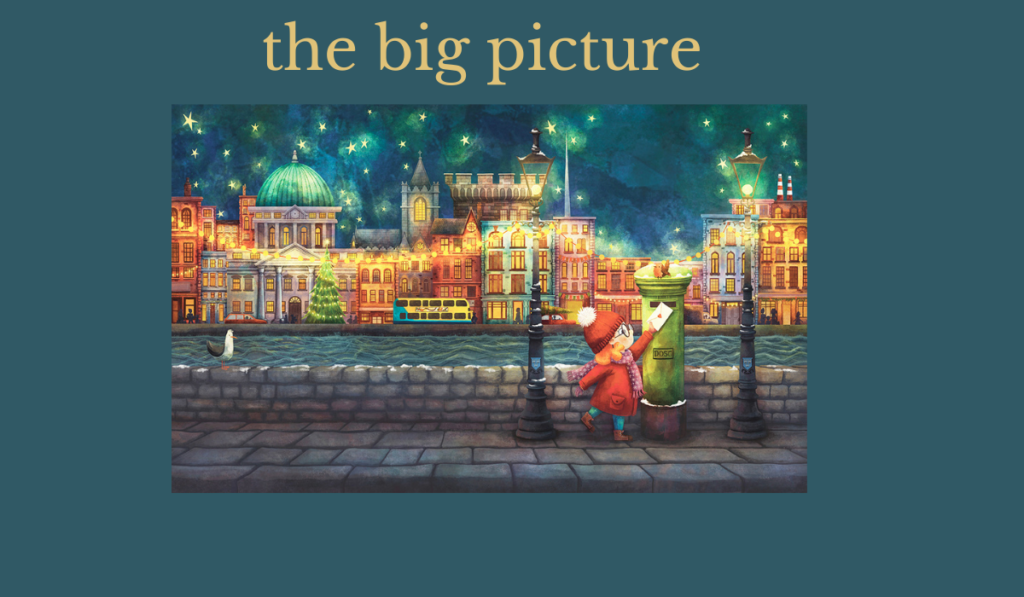
Evie’s Christmas Wishes|Shannon Bergin, Siobhán Parkinson|Little Island|ISBN: 9781912417797|€16.99
For The Big Picture, illustrator Shannon Bergin talks about colour, craft—and how if you want a career in illustration—persist.
Evie’s Christmas Wishes (Little Island) is available now, from all good bookshops.
SHANNON BERGIN—THE BIG PICTURE
What brought you to illustration? Was this something you grew into or did you always gravitate towards it as a child?
Growing up, I loved books and art but didn’t think about it as a job, it was just part of who I was. I lived between reality and fiction, facilitated by the adults around me. They told stories of ghosts, cursed houses, and every terrifying thing imaginable. The stories were always presented as 100% true. The stories became “books” that I would make with my best friend. We would staple printer paper together to create school books for our cats or illustrated alphabets or spell-books. I didn’t know what I was going to do when I grew up but looking back it does seem a little obvious.
What is the most misunderstood thing about an illustrator’s role?
Although I do feel very lucky to get to do what I do and I love it, it’s often a lot less fun than it appears from the outside! Taxes and book-keeping, emails and meetings, running my shop, and sourcing products. The active search for work when all the work has gone away for a week. The times when I think this might be it, time to get a “real job”, one where I can’t wear my pyjama pants when it’s chilly out. There is a lot of making art too and those days are more fun but often people don’t realise the other aspects exist!
What excites you most in your work?
Colour. Colour is the aspect of the world I find most inspiring and intriguing. I see the world in light and shadow. The colour of each illustration impacts the mood, the story, everything. It can be manipulated in countless ways and the challenge is something I really enjoy.
How do you approach illustrating someone else’s story (as opposed to your own)?
When creating my own stories the text often evolves along with the images. They are very much entangled and can’t be separated. I don’t have to say certain things with words because I can draw them and I would write what cannot be illustrated. When illustrating for someone else, the text already exists. I try to visualise what can add to the story while staying true to the author’s intentions.
Are there some illustrations you’ve done that are close to your heart?
The work I hold close to my heart is usually not my best work. They were turning points that led to where I am. They are the pieces that made me go “AHA!” because I finally figured something out.
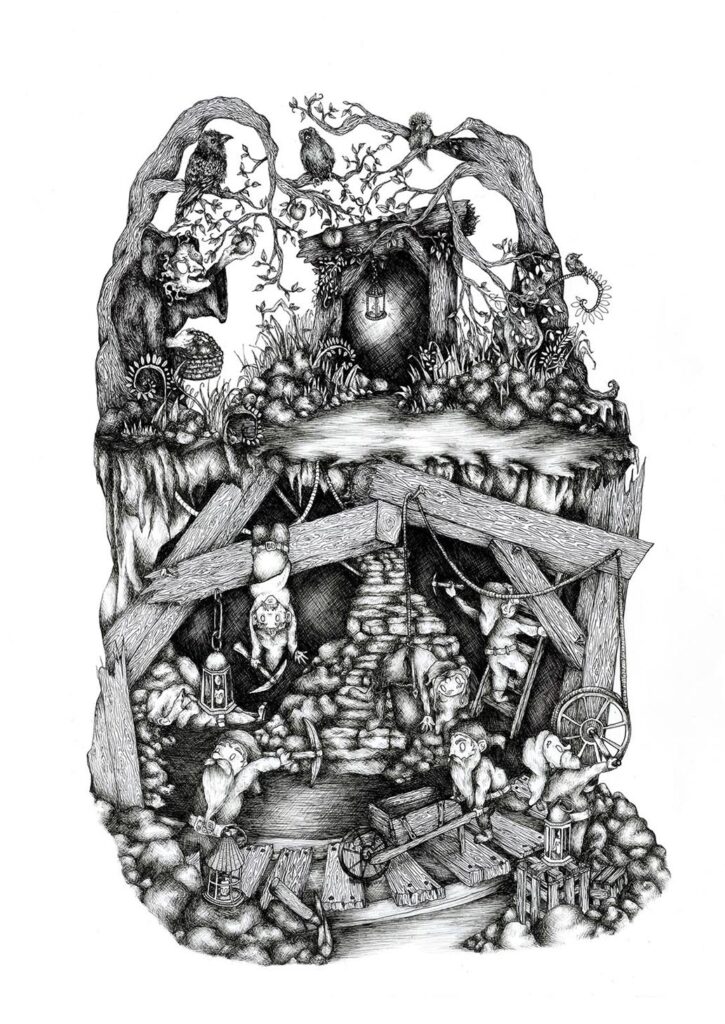
“Over the Seven Jewelled Hills” I exhibited in my second year of college. An exhibition of ink illustrations based on how children use story to process the world. I existed in the fine art realm, but someone came to the show and said “You should make children’s books.” I realised I was an idiot for not thinking of this myself. I won an award for the collection and it was the first time people really paid me for my work. It was the validation I needed to give it a try.
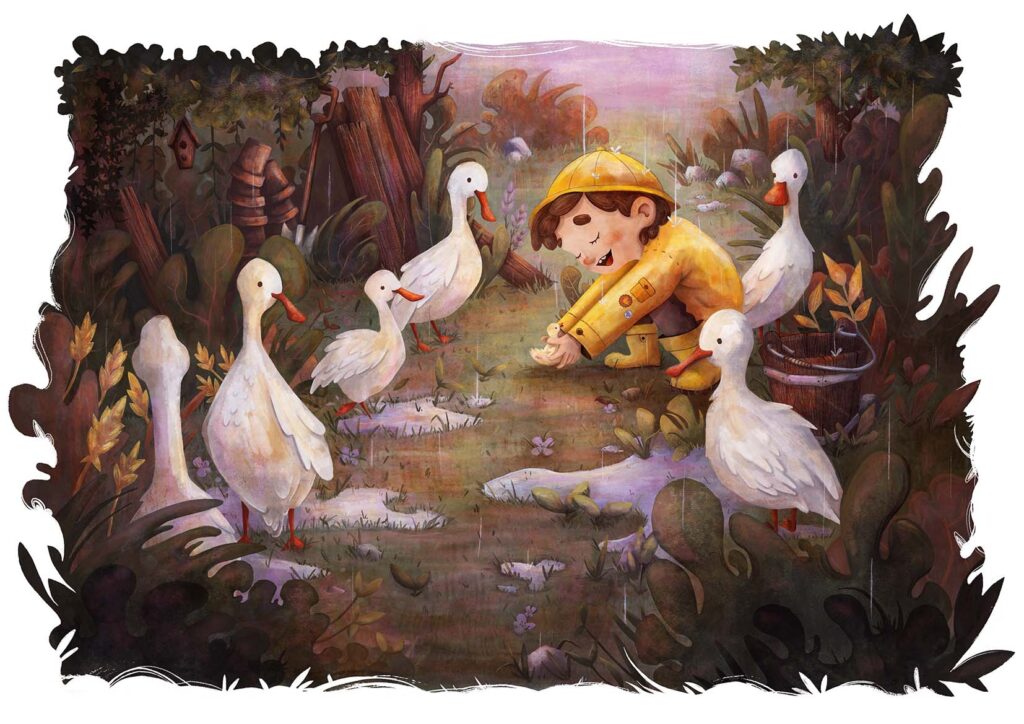
“Untitled Goose Painting” was a piece I made at the beginning of 2020. It was the start of a project that got cancelled because the world turned upside down. Yet, it was the first digital painting I enjoyed working on. The process was very different from my previous work and I learned a lot from it.
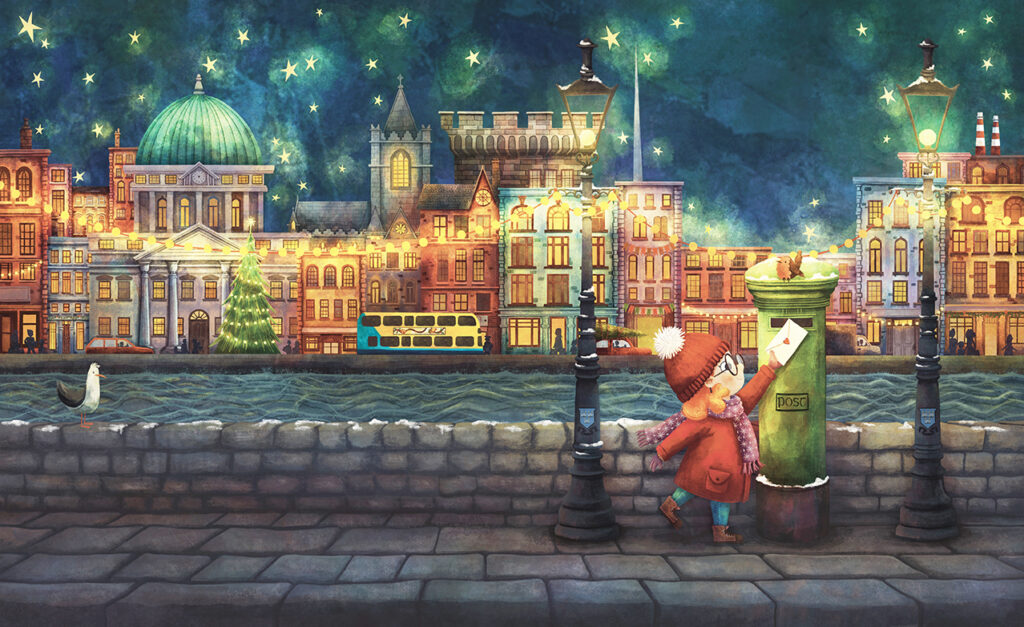
Lastly, the cover of Evie’s Christmas Wishes. I put so much work into that illustration that once I finished, I hated it. I sent it off to the publisher and didn’t look at it again for months. I even put it in another folder so I wouldn’t accidentally see it. Somehow though, when I look at it now it makes me happy. I think it needed to go away for a while so I wasn’t sick of it anymore!
Do you think that illustrators – particularly of children’s books – are given enough credit?
I can still visualise my favourite picture books from when I was a toddler. I don’t remember the stories, but I can see them in my mind over twenty years later. In my opinion, illustration is as important as writing in picture books, especially for young children. Yet there have been books that have caught my eye from across a bookshop and when I try to find who illustrated it, the credit isn’t there. The cover can initially have that much impact but the illustrator often gets none of the credit.
When you are illustrating for children, what do you keep in mind, how is it different from illustrating for adults (or is there a difference)?
For the most part, there isn’t a difference between the two audiences. Children may relate in the present, while adults may associate the illustration with a particular memory. Small details, almost forgotten, a style of chair, a mug, remind them of a time or place. Just because they’re grown-ups doesn’t mean they don’t respond to elements of childhood, it’s just in a different way.
What advice would you give to someone who is thinking about becoming an illustrator?
Make lots of art and try lots of things. Figure out the process you enjoy because you will be doing a lot of it and just keep persisting. Oh, and stretch often. Your hand will become a painful claw that is neither fun nor conducive to a good illustration career.









